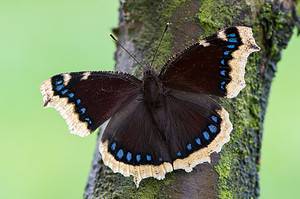Butterflies are some of the most unique and beautiful creatures on our planet. Each species is different but all are integral to the balance of our eco-system. Butterflies are pollinators, which means they are necessary for gardens and flowerbeds to thrive.
While no two species of butterflies are the same, there are several general differences between male and female butterflies. Read below to learn about eight key differences in these magnificent winged creatures.
Size Matters
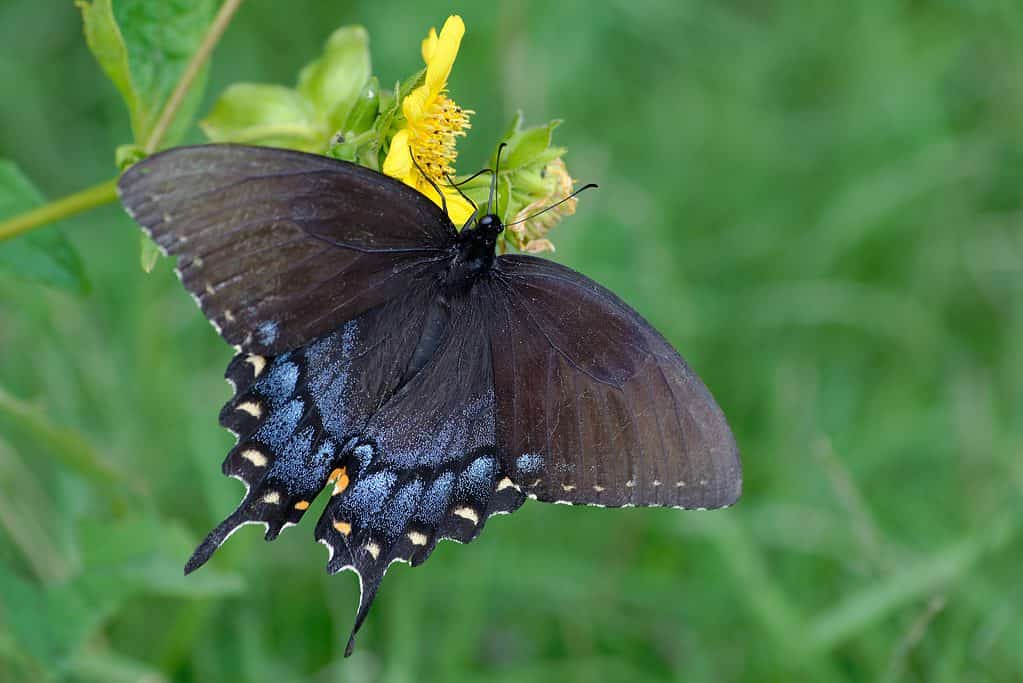
The female eastern black swallowtail butterfly is larger than its male counterpart.
©Thomas Woolsey/Shutterstock.com
One of the most noticeable differences between male and female butterflies is their size. In many butterfly species, males are smaller than females. This size difference is most noticeable in species where males exhibit a behavior called “lekking.” Lekking is where the male butterflies will gather in a particular area to display themselves in hopes of attracting a female to mate. Being smaller can make them more agile during these displays, which allows them to compete effectively for female attention.
Color Variations in Male vs. Female Butterflies
Some species, such as the monarch butterfly, have distinctions that make it easy to determine gender. Such distinctions are examples of sexual dimorphism, when the male and female of a particular species have differing morphological traits.

The male monarch butterfly has two distinctive dots on its lower wings.
©Media Marketing/Shutterstock.com
One of the easiest ways to tell if a butterfly is a male or female is by their color pattern. As pictured, the male monarch has two dots on the lower wings, whereas the female has straight lines on its lower wings. These differences can often be seen in the final stages of chrysalis.
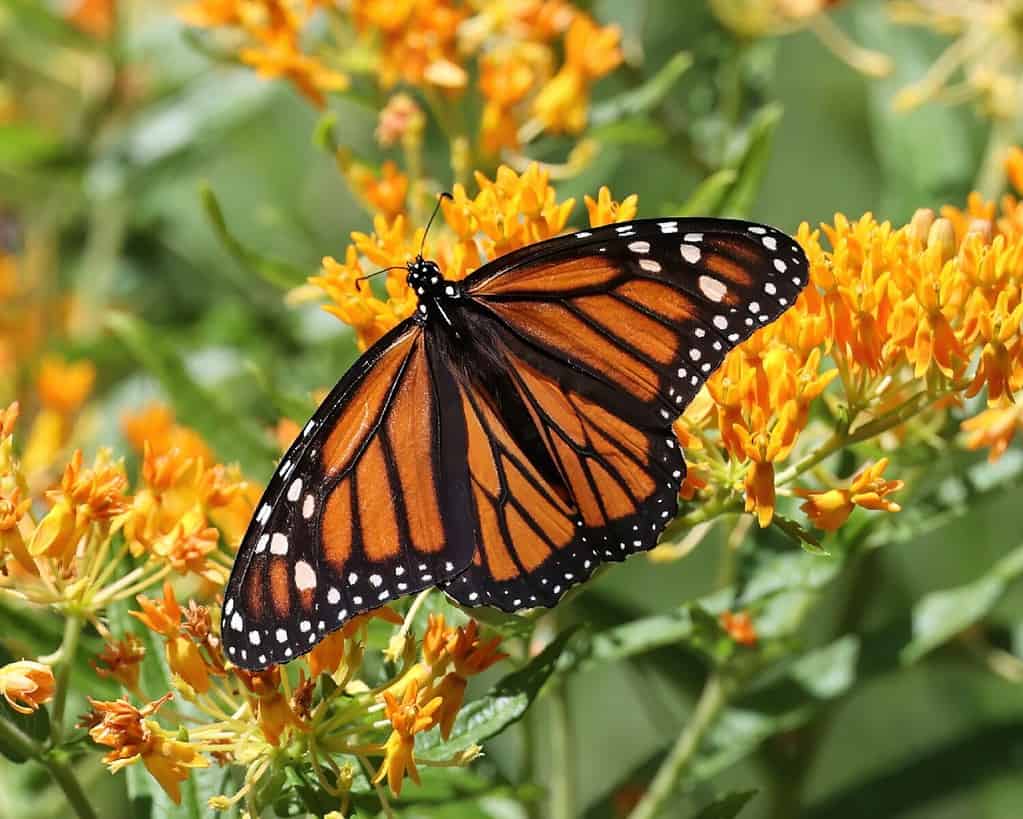
The female monarch butterfly has no dots and straighter lines on its lower wings.
©David Trevarthen/Shutterstock.com
Male and female butterflies can have completely different patterns in other species, such as the eastern black swallowtail or the blue morpho. In fact, female blue morphos are not even blue at all; they are brown. This allows them to disguise themselves to avoid predators. The males are the ones that present the bright blue iridescent wings that give them their name. This vibrant appearance often serves a dual purpose, helping males attract potential mates while also warning predators that they might be toxic.
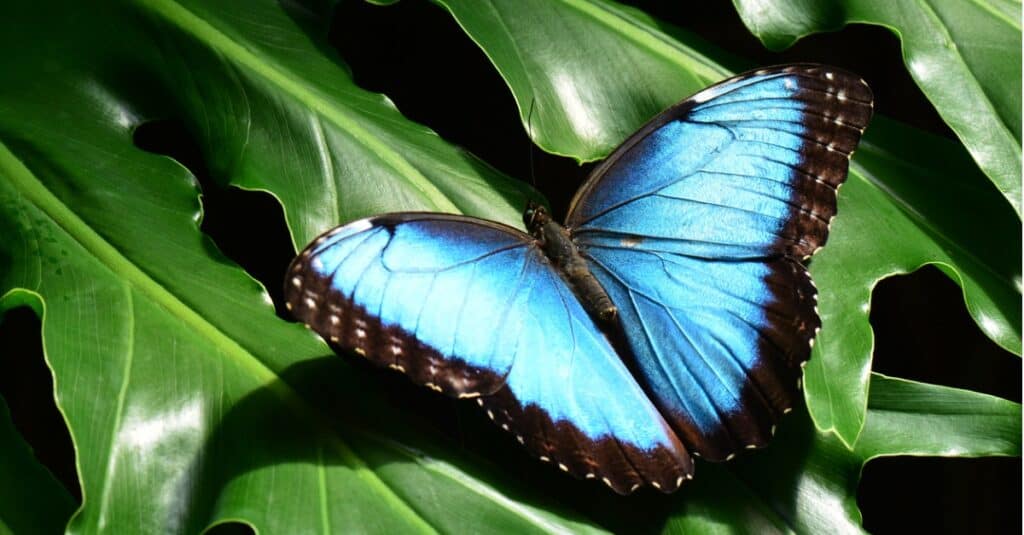
The male blue morpho is notable for its color, from which it gets its name.
©iStock.com/SHAWSHANK61
Male vs. Female Behaviors: The Act of Courtship
Male and female butterflies exhibit unique courtship behaviors. Males are usually the ones engaged in elaborate aerial displays, engaging in a series of acrobatic maneuvers to attract females. These displays can include fluttering, spiraling, and soaring, all designed to impress potential partners. In contrast, females are usually more reserved and selective, observing these displays and choosing the most suitable mate.
Male Antennae vs. Female Antennae
Not as easy to identify with the naked eye are the differences in antennae. Male butterflies have longer, narrower antennae, which helps them pick up the pheromones that the females release. These antennae are more sensitive than those of the females, whose antennae are often shorter and thicker.
Reproductive Organs in Male and Female Butterflies
The male butterfly sexual organ is a clasper and it is located at the end of the abdomen. Claspers are used to grip the female during mating. Female butterflies have an ovipositor, a tube-like structure used to deposit eggs on compatible host plants. Their unique sexual organs ensure proper mating and reproduction.
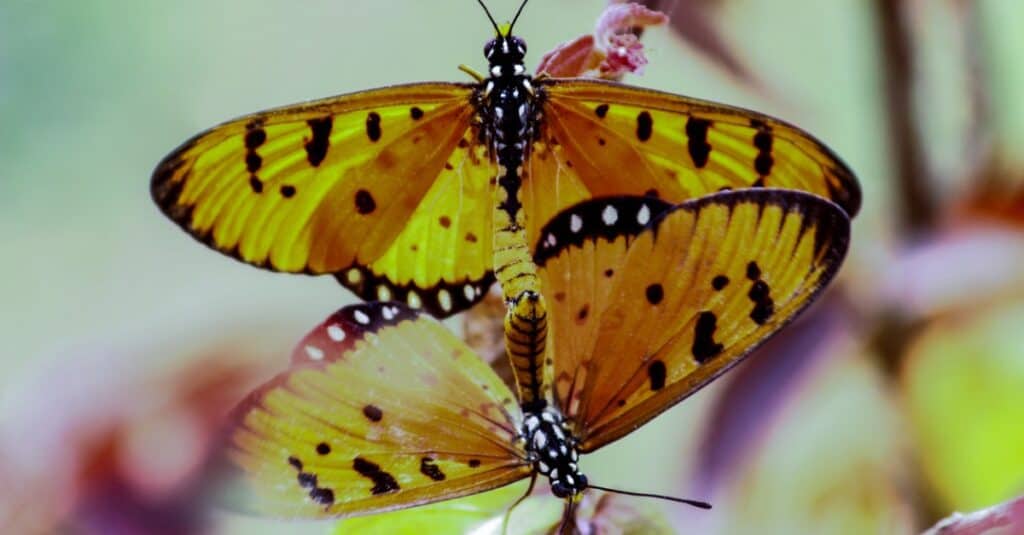
After enticing the female, the male clasper connects to the female ovipositor and they mate.
©iStock.com/AVR
Males vs. Females – Which Has the Longer Lifespan?
Butterflies in general have short lifespans. In some species, a lifespan of four to six weeks is common. Other species can live four to six months. Certain butterflies that follow migration patterns have super generations that live three to four times as long. These unique generations can live up to six months to ensure successful migration. Monarchs are among those species.
In some butterfly species, there is a notable difference in the lifespan between males and females. Generally, males tend to have shorter lifespans than females. This attribute helps the males in energy-intensive courtship and mating behaviors. Once they have fulfilled their reproductive role, many male butterflies live only for a few days. The females continue to live longer, laying eggs and contributing to the next generation.
Parental Roles Among Males and Females

After mating, the male butterfly often only lives a few days more. Females live longer to lay eggs.
©Mario Krpan/Shutterstock.com
It takes a male and a female to mate, but after that act, the male butterfly’s parental roles are complete. Meanwhile, the female is responsible for finding the proper host plants to lay their eggs. Each butterfly species will only have a few compatible host plants that their newly hatched caterpillars can eat. Fertilized females will often fly miles to find the correct host plant for their species.
Once she has deposited her eggs on the proper host plant, the maternal roles of a female butterfly are complete. Her eggs will hatch into caterpillars and she cannot protect them from predators. Many butterfly experts will admit that female butterflies are often seen returning to the host plants where they laid their eggs. Still, they are ill-prepared to protect their caterpillar babies from ants, wasps, and other common caterpillar predators.
Butterfly Appetites – Male vs. Female Feeding Preferences
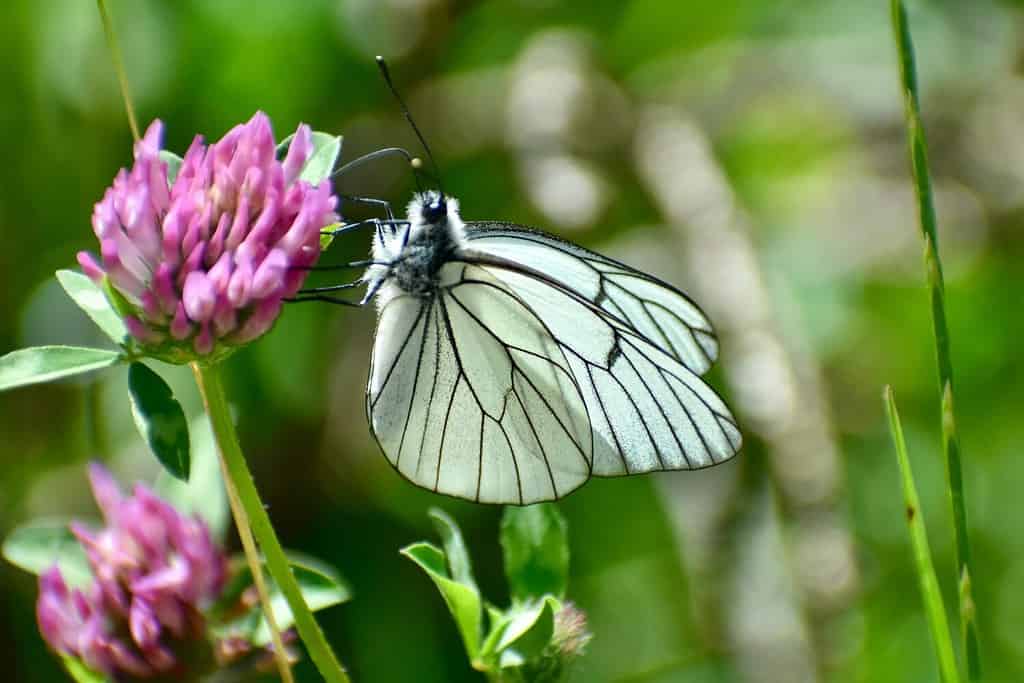
Male and female butterflies both feed on nectar, but their feeding provides energy for different things.
©doroninanatalie4/Shutterstock.com
Although both male and female butterflies primarily feed on nectar from flowers, there can be differences in their feeding preferences. Males tend to focus more on obtaining energy for courtship and mating, while females prioritize energy for egg production. This can lead to variations in the types of flowers they visit and the duration of their visits.
| Differences | Males | Females |
|---|---|---|
| Size | Smaller | Larger |
| Color Variations | Vibrant to attract females | Muted for protection |
| Courtship Behaviors | Initiates | Reserved and Selective |
| Antennae | Long and Narrow | Short and Thick |
| Reproductive Organs | Clasper | Ovipositor |
| Lifespan | Shorter | Longer |
| Parental Roles | Fertilizes eggs | Lays eggs |
| Appetites | High-Energy Diet | Egg Production Diet |
The photo featured at the top of this post is © Steve Byland/Shutterstock.com
Thank you for reading! Have some feedback for us? Contact the AZ Animals editorial team.




